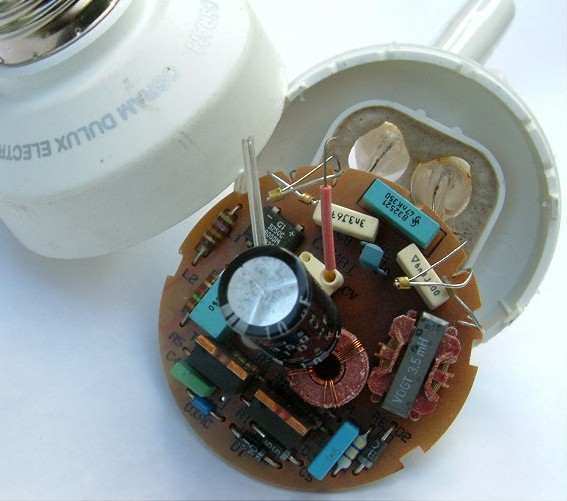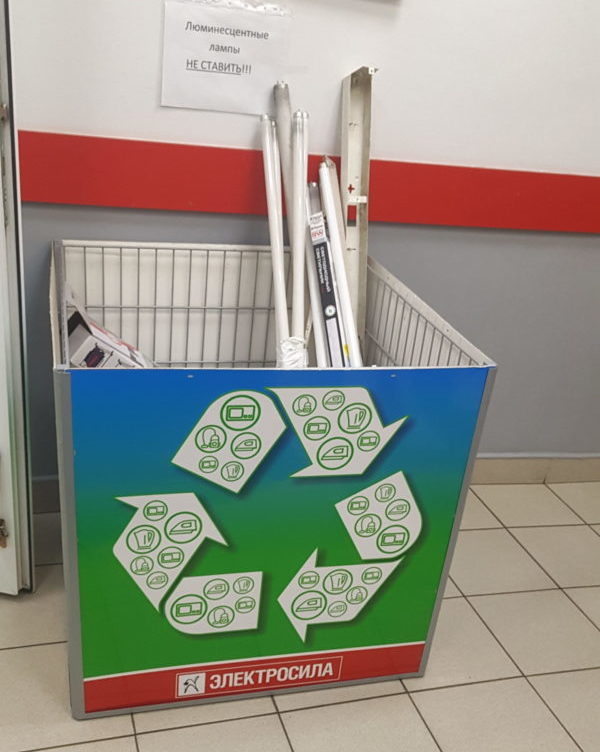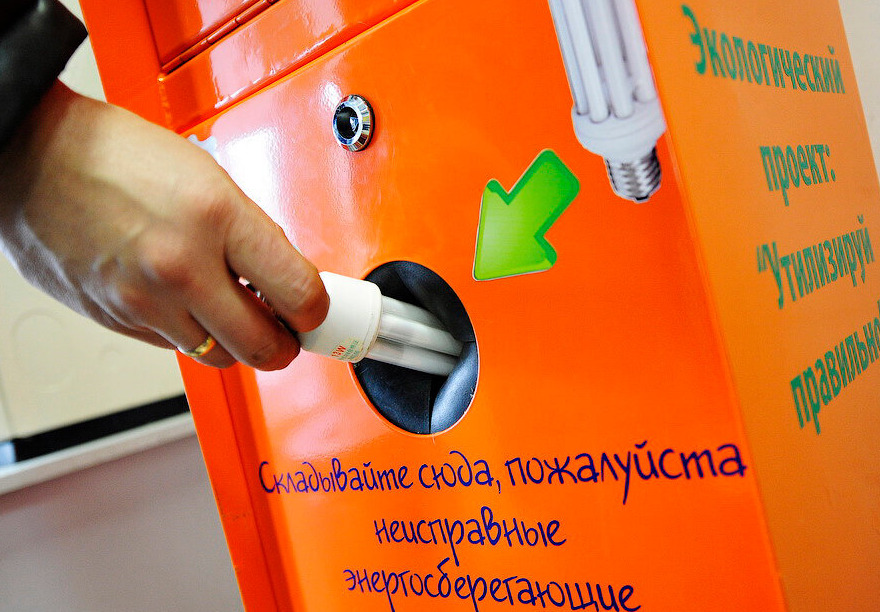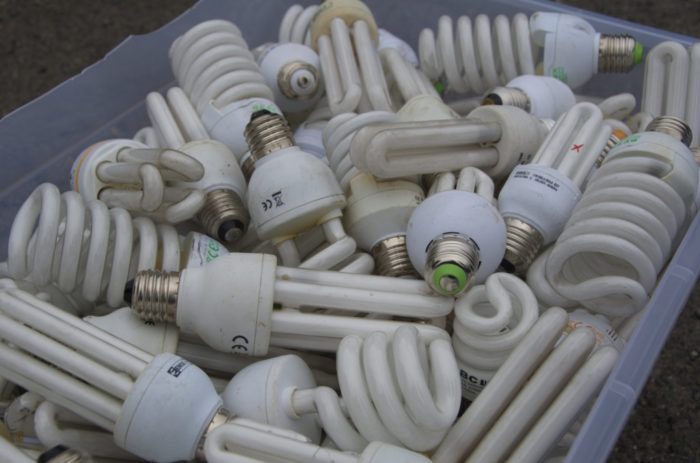How to dispose of energy saving light bulbs
Energy saving lamps (ESM) are efficient lighting products that can be hazardous to humans and the environment. Their disposal must ensure complete removal of harmful substances.
The composition of energy-saving lamps
There are three elements in any ESL:
- A base with contacts for connecting electricity;
- A bulb with inert gas or mercury vapor;
- Control gear (ECG).

The type and size of the base affects the installation in a particular luminaire. The bulbs also come in different shapes: spiral, tube, ball, candle, or pear shapes.
The inside of the bulb is coated with a phosphor, which produces the desired glow when exposed to ultraviolet light. The ultraviolet radiation is produced by electrons moving under voltage, interacting with the mercury vapor.
The ballast is mounted in a cartridge and is a circuit board with a diode bridge. The circuit rectifies the AC mains voltage and boosts it to start. THE ECG is responsible for uniform illumination of the desired brightness without flicker or unpleasant pulsation.

CFLs are durable enough to last 15,000 hours. However, improper use and significant voltage fluctuations can shorten the life of the product.
Damage and dangers of the bulbs
The dangers of energy-saving lamps are the eye strain and the presence of harmful substances inside the bulb.
ESLs are not recommended for use in table lamps, especially for children. The glow has a detrimental effect on the retina and can lead to significant visual impairment. In addition, all devices emit harmful electromagnetic and ultraviolet radiation.
Such disadvantages can be mitigated by following the recommendations. Buy high-quality appliances from reliable manufacturers. Chinese analogues will fail quickly and are more harmful to the eyes.
When installing the device in the luminaire base, do not hold it by the bulb, as this part is the most fragile.
If the device starts flashing, immediately check Check for malfunctions immediately, repair or Repair or replace.
All energy-saving light bulbs must be disposed of properly. Disregarding the recommendations can lead to an environmental disaster (if there is a large amount of waste). Mercury from ESLs entering water bodies causes toxic poisoning of water and all living organisms.
Useful to read: starting in 2020 there will be a ban on fluorescent light bulbs
Breaking the tightness of the bulb in the living space leads to poisoning of the environment and affects the internal organs of the person. Especially the nervous system and the gastrointestinal tract are affected.
Why do you need to dispose of energy saving lamps
All ESLs inside the bulb contain mercury vapor, which emits radiation and is a Class 1 hazard.
In liquid and solid state mercury is practically not dangerous. However, the low boiling point leads to a very rapid conversion to vapor, which easily penetrates the body. Treatment of poisoning is extremely difficult because the mercury lingers in the body for a long time and is poorly excreted.
Simply throwing away the ESL is not an option. Harmful substances from a broken bulb can poison water, soil, upset the balance of the ecosystem and harm all life. Therefore, the devices must necessarily be disposed of using the developed methods.
How to dispose of bulbs correctly
Disposal of energy-saving lamps must be carried out in strict accordance with the rules established by the government. These rules require that such waste be collected separately from other trash.

Once a certain amount of hazardous waste has been collected, it is transported to the appropriate organizations for subsequent demercurization, which involves the complete removal of the mercury.
ESL is disposed of by mechanical and mechanical-chemical methods. The mercury is exposed to heated cement dust for 12 hours. The result is a safe sludge, which is buried in a special place.
Thermal disposal is possible. Defective lamps are loaded into a furnace and heated to 400 degrees Celsius. The mercury is converted to gas and discharged into an exhausted area through a hood.
Thermovacuum method of disposal is characterized by the highest efficiency and increased mercury vapor capture. The process consists of steps:
- Faulty bulbs are crushed in a chamber.
- Heating to 450 degrees occurs.
- Mercury gas passes through a hood and is captured by a trap.
- The vapors are cooled with liquid nitrogen.
The mercury separated from faulty appliances can be used to make new energy-saving lamps, which makes the recycling process profitable.
Where to dispose of energy saving lamps
Faulty energy saving lamps are collected by:
- HMOs or RECs;
- IKEA stores, which have ESL containers;
- Street bins, which are appropriately marked and painted yellow or orange (found in large cities);
- companies manufacturing or servicing electrical equipment;
- organizations that collect hazardous waste from the public.

Acceptance of mercury lamps can be combined with the reception of spent batteries and power supplies. Sometimes hazardous products are handed over to the electrician of the management company servicing the house.
Bulb Storage Rules
Rules for the storage of ESLs are prescribed by law and must be followed by all disposal companies. The storage, collection and recycling of devices is handled by authorized companies.
Storage rooms should be large, well ventilated and equipped with protective equipment. It is especially important to have a means of removing the mercury.

Transportation of waste bulbs is handled according to all rules for transporting dangerous goods. Companies must make sure that the bulbs do not break while in transit.
Already broken EBs are collected and stored in a container that does not leak harmful substances. Thick-walled sheet metal drums with carrying handles are usually used. Whole lamps should not be stored with broken ones.
